Over the weekend, I stumbled across a newspaper headline that felt like it was clickbait written just for me: “Designing a Child’s Room?” it asked. “Start With a Good Storage Plan.”
Now, longtime readers of this Substack know that I have a thing for storage solutions (as illustrated in this essay I wrote about my attempts to seek control in the Container Store). I love shelves. I love containers. I love containers that fit onto shelves. I work from home, and am acutely—and unfortunately, for reasons that shall become quickly apparent—sensitive to visual clutter. So I’m primed to appreciate a good storage plan.
I also have an almost nine-year-old who is exceptionally creative—for her birthday last year, she asked her friends’ parents for their discarded Amazon boxes so that she could build things out of them—but who is not particularly great about cleaning up after her creative endeavors. (Let’s call it a “learning edge.”) At the time when I saw that headline, said child had been home for the better part of a week due to MLK weekend and snow closures, and had been crafting as if her life depended on it. The house was a disaster, and it was driving me nuts.
So you can imagine my excitement when I read the subtitle: “Most children have a lot of stuff, and they aren’t always inclined to tidy it up. Here’s how to embrace the abundance — and create tools to manage it.”
It was as if the copy editor had peered into my soul. Or at least my dining room.
The first indication that this article was not actually going to be applicable to my—and perhaps anyone’s—life was this picture. Yes, that is the actual caption.
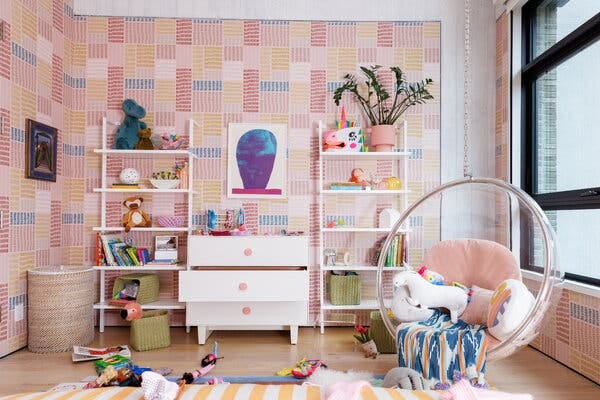
My immediate response to this photograph was to laugh because, come on now, whose child’s bedroom ever looks that tidy? But now I’m laughing even harder, because what I didn’t realize until just now —as in, as I was writing this sentence—is that if you hover over it with your mouse, an alt-text caption pops up that says, “Her daughter’s room before cleanup.”
Yes, my friends. This is the before photo.
Now, I am not in any way making fun of the designer who’s being profiled in this piece (which is why I’m redacting her name). She seems like a very nice person with a very nice aesthetic and dear god, if she could make my daughter’s bedroom look like her before photo, I would be a very happy customer. (I’d also be happy to move in to her daughter’s bedroom.) I also am well aware of how long it took for the photographer to stage these photographs, and that the captions were likely written by the copy editor.
But still. As I read through the article’s suggestions, I could not help but feel annoyed at the fact that it had even been published; it seemed like it had been designed to spark insecurities in anyone who might possibly be interested in reading it. I mean, even Marie Freaking Kondo, author of The Life-Changing Magic of Tidying Up, admitted that she herself had “kind of given up” on tidying after she had kids. (As she confessed to Variety Magazine, “My home is messy.”) As I continued to scroll through the photographs (because when something’s making you feel bad, why not continue to do it?), I felt my irritation growing.
And then. . . .
I remembered the Funtervention
I was about to close the browser tab and go back to feeling annoyed by my messes (with a bonus level of annoyance at the article), but then my own brain staged a Funtervention: even though I found the piece ultimately to be more irritating than helpful, it was so far removed from my reality that it actually was quite funny.
It struck me as an opportunity to do something playful which, as you may recall from my earlier Funtervention post about my definition of fun, means figuring out ways to have a lighthearted attitude and finding (or creating) ways to laugh. Playfulness is often the hardest of the three ingredients for adults to internalize, making it especially important to embrace any possible playful instinct we might have.
Many of my personal playful instincts have to do with writing. So instead of stewing in my perceived inadequacy (or getting mad at my daughter—after all, she’s been cooped up, too), I decided that obviously, what I needed to do was to take photos of my own living spaces and caption them with descriptions of my personal “storage solutions,” based on what is actually happening in my house right now.
For example, here is one of their solutions:
“A ceramic cup holds color pencils.”
Here is one of my solutions:
An old wooden box (originally used for cleaning supplies, irony noted) holds a dropper bottle, a single pink pencil, a souvenir treasure box from Costa Rica, a collection of squishy and slightly sticky animal blobs, a My Little Pony, and a container of buttons. Except for the treasure box, the provenance of these items is entirely unknown.
Their solution:
“Ms. [Redacted] uses small bins to subdivide drawers, making it easier to organize various kinds of objects.”
My solution:
Ms. Price uses the marble counter beneath her glassware to store the dog’s food, some bird seed, a Soda Stream, a bottle of a de-tangling product called “Cowboy Magic,” a decorative Victorian heating vent cover, and a partially destroyed Christmas village, making it easier to reach for a wine glass instead of cleaning it up.
Their solution:
“The covers and spines of children’s books are fun to look at, but to give them a sense of order, Ms. [Redacted] likes to arrange them by height, in descending order. A book end is helpful to keep them from tipping over during boisterous play.”
My solution:
The covers and spines of children’s books are fun to look at, but to maintain the shred of sanity to which she clings, Ms. Price likes to toss them into a Jenga-like pile in the corner of the dining room, in front of a rarely used child’s broom kit. A nearby door is helpful in allowing her to forget that they exist.
Their solution:
“In her daughter’s room, the bottom drawer is set up to hold shoes and socks.”
My solution:
In her daughter’s room, the floor is set up to hold stuffed animals.
Their solution:
“For speedy cleanup at the end of the day, Ms. [Redacted] likes to use baskets. Toys and art supplies can be easily tossed inside them and concealed.”
My solution:
For speedy clean-up at the end of the day, Ms. Price likes to use baskets. Toys and art supplies *could* be easily tossed inside them and concealed . . . but they are not.
I could go on. (And, in fact, I did go on—see below.) But the point is that, while writing this post did not make my house any tidier, it did make me laugh.
And that’s important, because laughter doesn’t just feel good; it also has a slew of positive effects on our health, from obvious things like relieving stress and improving our moods, to more surprising things like boosting our immune systems and triggering the release of endorphins that can decrease pain. This is one of the many reasons that fun is good for us.
Writing this post also reminded me of another benefit of laughter (and fun): it boosts our resilience. As Jennifer Aaker and Naomi Bagdonas write in their fantastic book, Humor, Seriously, “A person without a sense of humor is like a wagon without springs. It’s jolted by every pebble on the road.” The more you can laugh about life’s challenges, the more resilient you will be. (And yes, you could argue that resilient people are also able to laugh more, but I think the causality goes both ways.)
In my case, all the messes depicted in these photographs still exist, but they’re not bothering me as much as they were before, and I feel just a tiny bit more motivated to do something about them—in other words, playfulness has given me more energy.
Now that my resentment has subsided, I’m also experiencing one of the other benefits of playfulness and fun: they can help us become more efficient. (And even if they don’t boost efficiency, they make tasks feel more enjoyable, which will make them feel shorter.)
For example, if I want to get my daughter to clean up that pile of stuffed animals, I could stand in the doorway and nag her. She’d resist me, and I’d get increasingly annoyed, which would only make her go slower and leave us both feeling cranky. OR, I could encourage her to do something she already often does on her own, which is to put on music (her go-to choice is “A Spoonful of Sugar” from Mary Poppins, which seems appropriate) so that she can dance while she cleans. On the surface, this might sound less efficient. But in reality, a dance-powered clean-up often takes less time, and it definitely leaves us both in better moods. What started as a confrontational chore can actually create a memory of shared fun.
What to do today:
Your mission today, if you choose to accept it, is to identify something in your life that is annoying, and try to figure out a way to laugh about it or make it feel just a little bit lighter or fun. Then notice what effect this has, both on your mood and on your ability to deal with the annoying thing.
Note: I’m not suggesting that you start snapping photos of your living space and writing captions. That would certainly make me laugh, but we all access playfulness in different ways. Just figure out something that would make *you* laugh (or at least smile) about the situation. If you can’t find anything humorous at first, see if you can identify anything that is absurd (absurdity is often fertile ground for humor). You can keep this private—there’s something delightful about making yourself laugh—but it also can be cathartic and fun to share it with someone. Text or call a friend, or tell us about it in the comments. Don’t be afraid to be a bit silly, or even ridiculous. (And if you truly cannot find any way to be playful or laugh about the annoying thing, experiment with doing something that makes you laugh before you tackle the annoying thing, and see if it makes it feel any less annoying.)
I think that Aaker and Bagdonas sum it up well when write, “We don’t need to take ourselves so seriously in order to grapple with serious things.”
Or, at very least, with our messes.
To scrolling less, living more, and finding ways to laugh,
Bonus tips:
(Because this is much more fun than actually cleaning up.)
Their solution:
“The top of a dresser is a good place to store specialized things like headbands. Ms. [Redacted]’s daughter uses a unicorn-themed headband stand.”
My solution:
The top of the dog’s crate is a good place to store specialized things like games, off-season place mats, and art projects from your child that you don’t quite want to keep, but can’t quite bring yourself to throw out. Ms Price uses an old shoebox.
Their solution:
“Display areas are for items that are very pretty and we want to look at, but that don’t get played with as often,” Ms. [Redacted] said.
My solution:
The kitchen counter is for items that are not pretty and that we don’t want to look at, but that don’t seem to get put away, ever, and in fact appear to multiply while we are sleeping.
And lastly, when all else fails:
Embrace it.





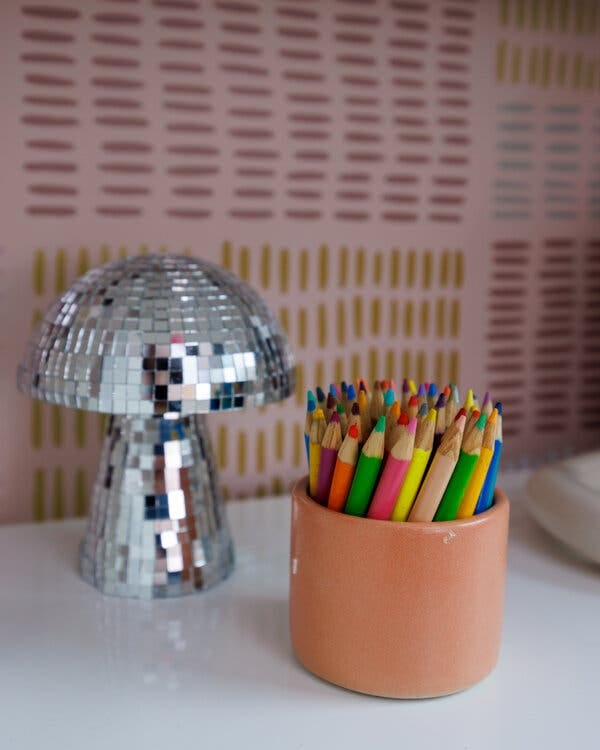
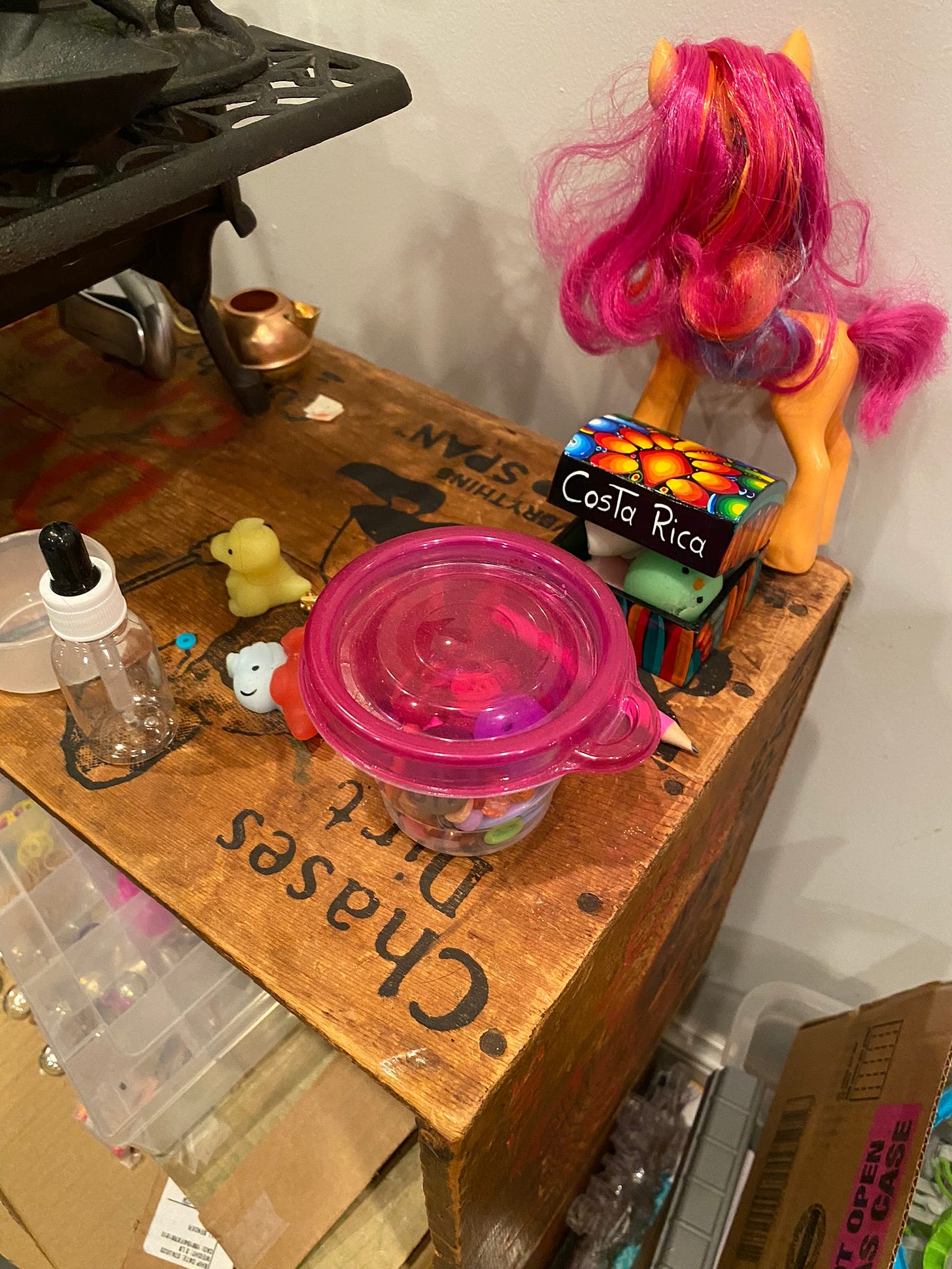
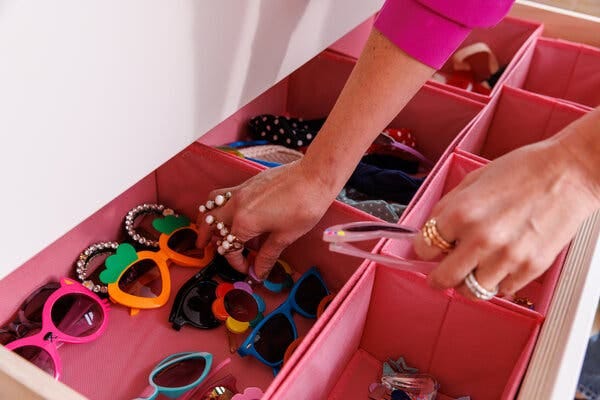

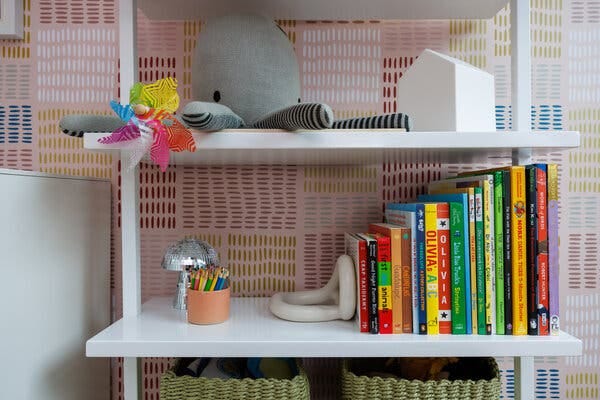
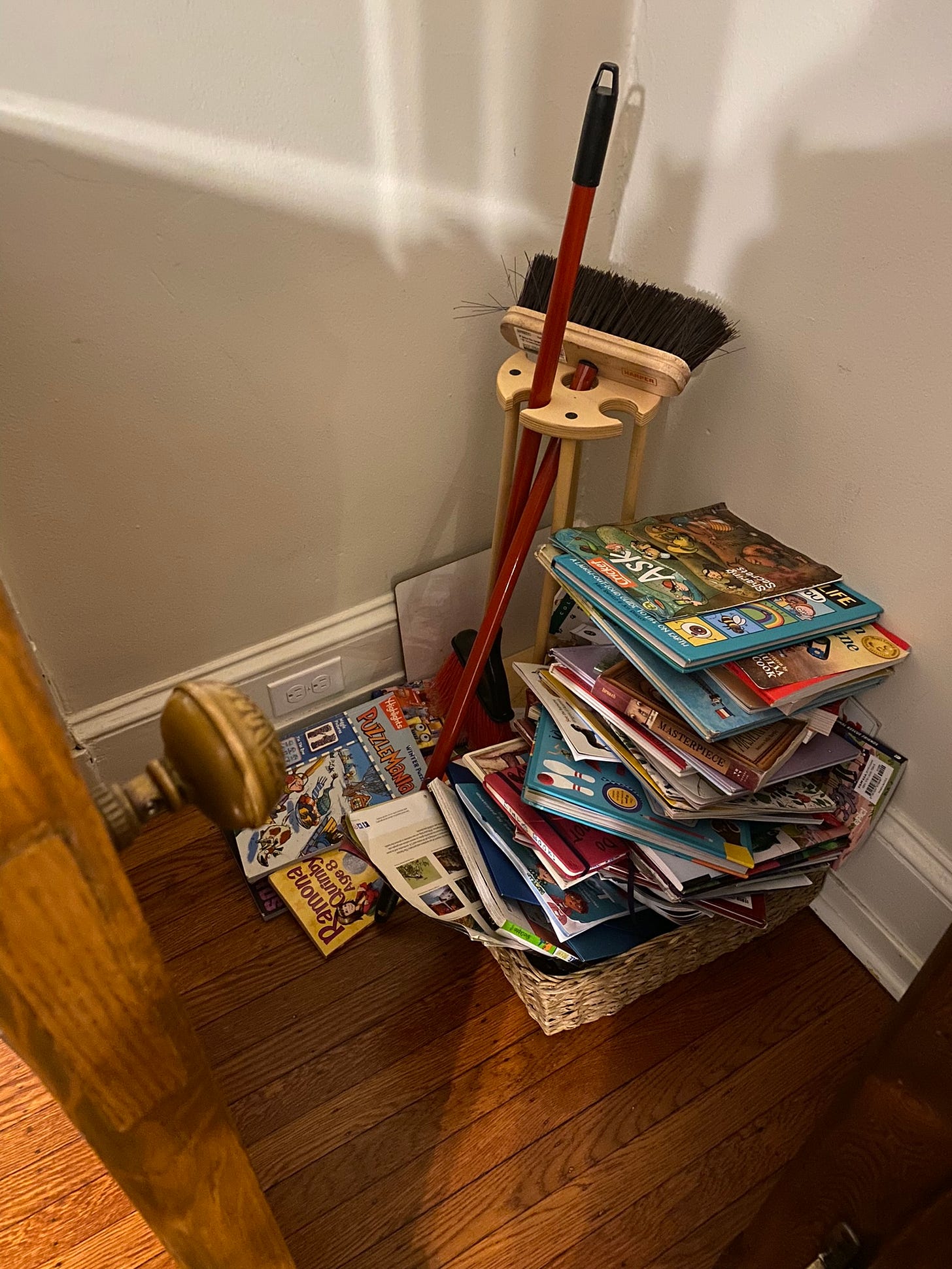
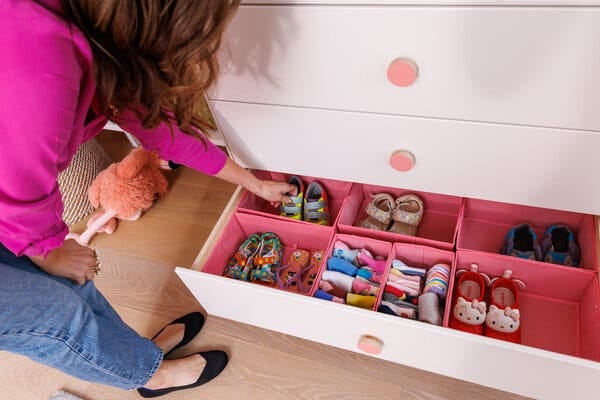
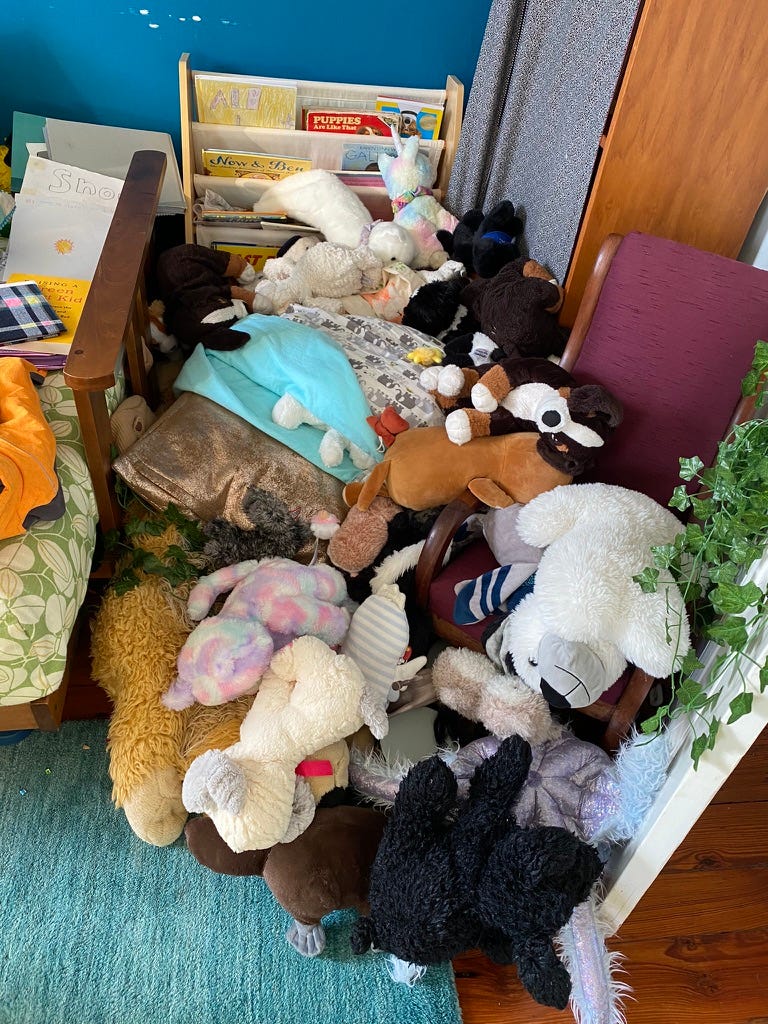

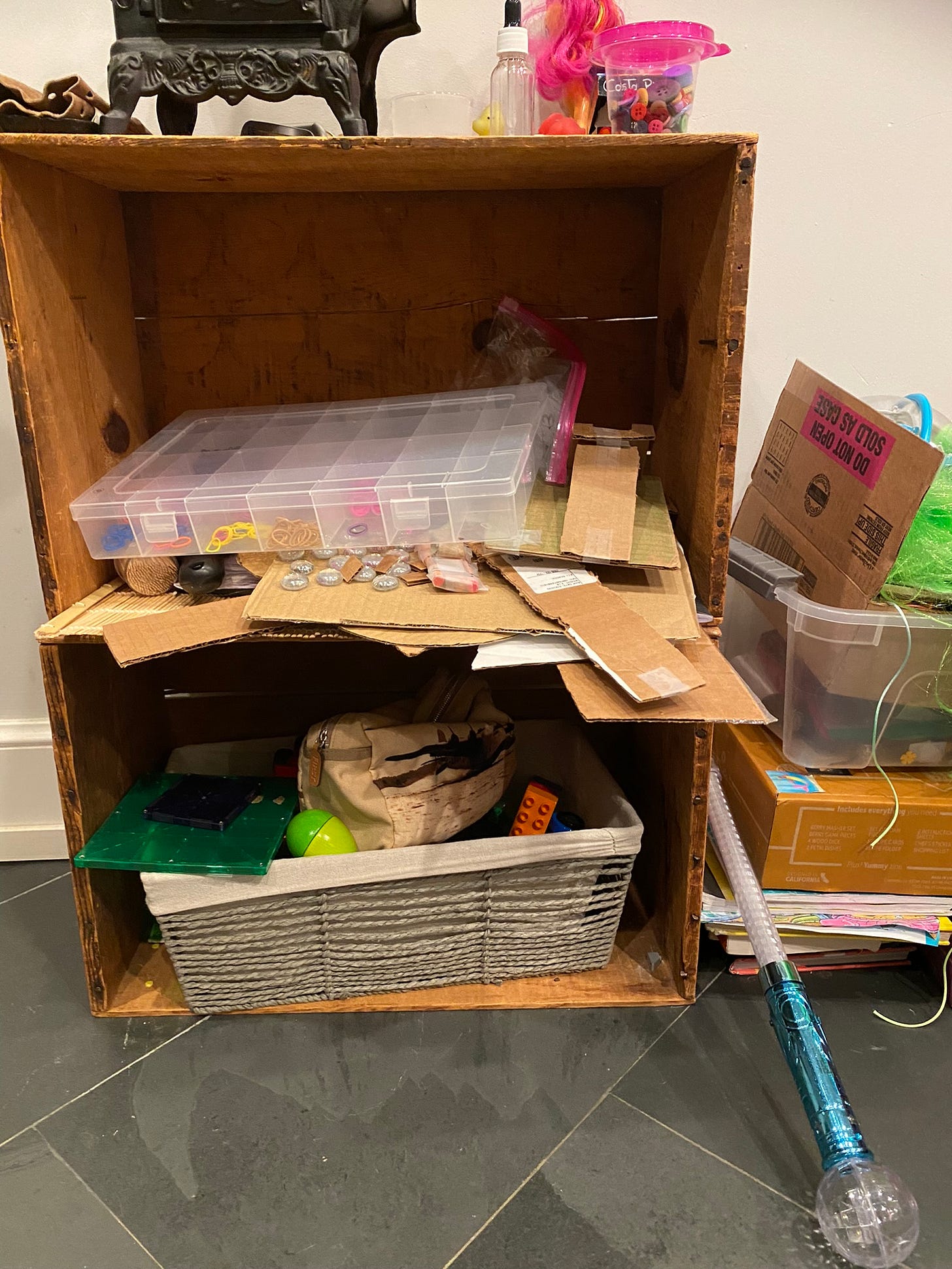

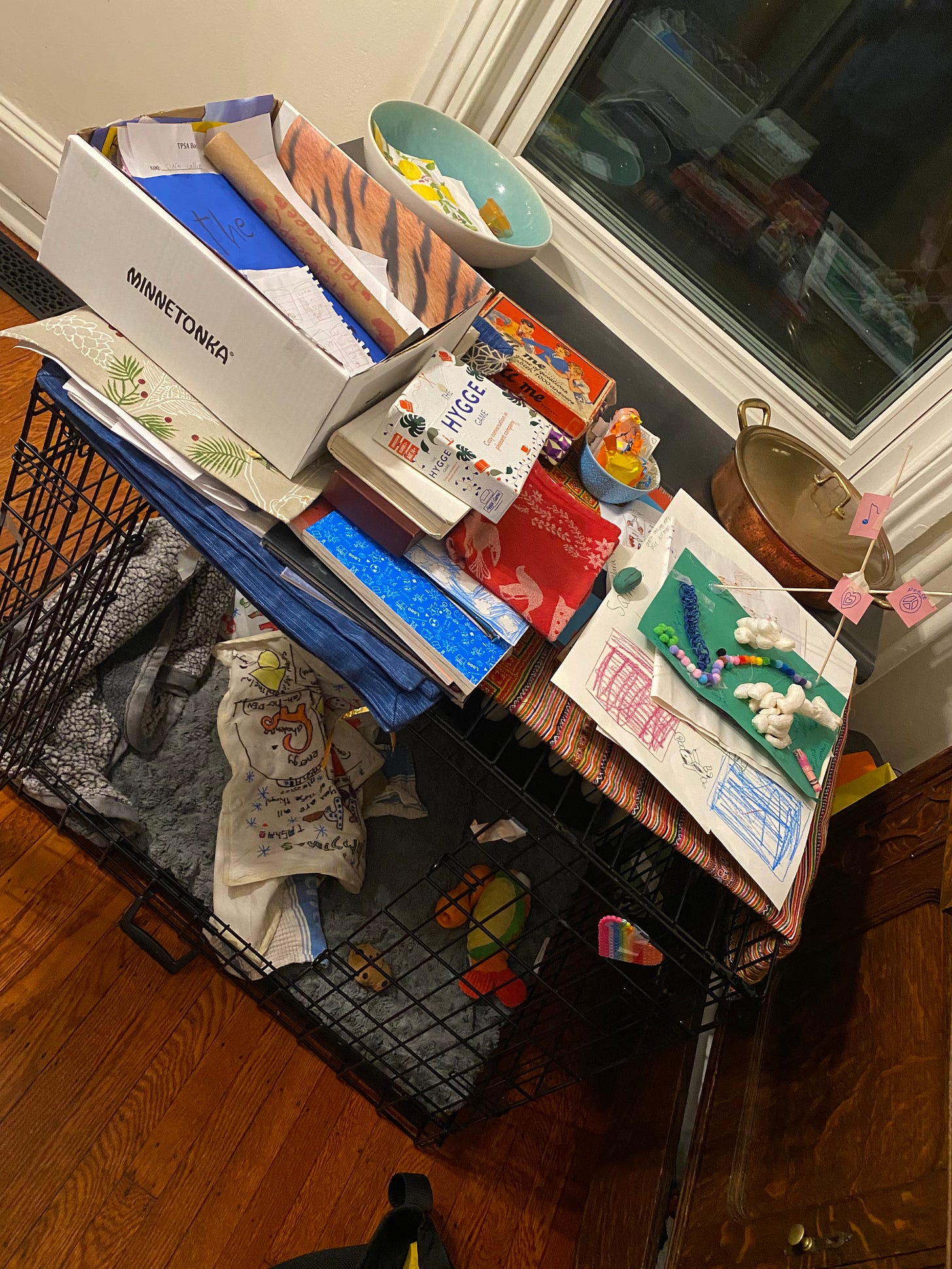
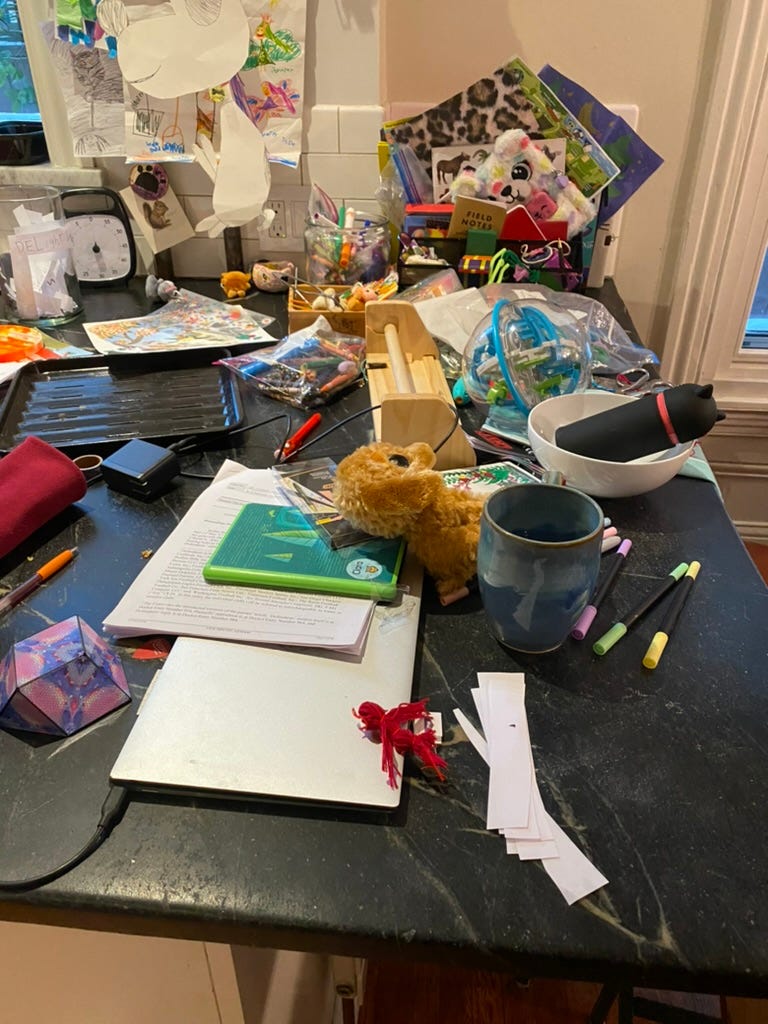

I really like the way you highlighted the absurdity of the designer's post without denegrating and outing her. Quite fun, indeed.
As a mother of two I laughed at this. One thing I've been doing for a while now is picking up all the stray Nerf bullets and putting them inside my son's shoes that are left on the stairs. In the years I've been doing this he's never once mentioned it until yesterday morning on the way to school he realized there was a bullet in his shoe that he had been wearing for at least 15 minutes. I had a good chuckle at that.